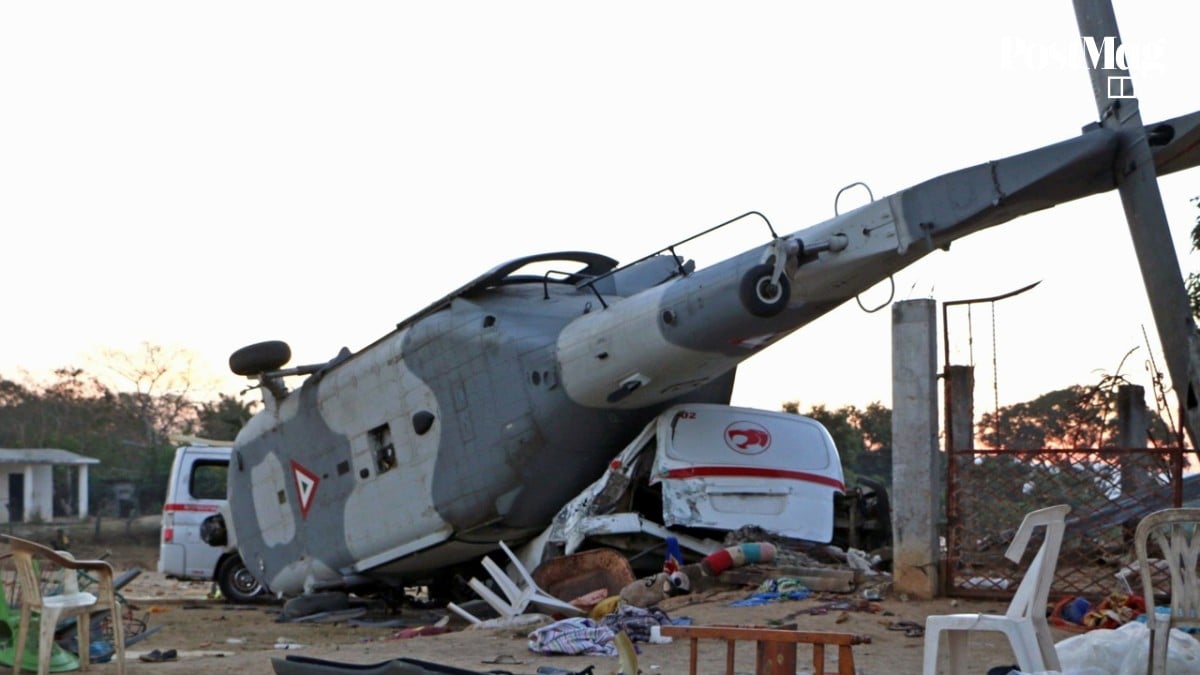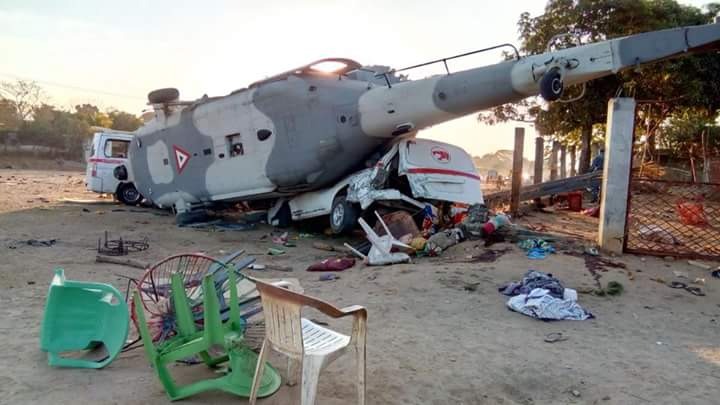A tragic helicopter crash in Mexico claimed the lives of 14 civilians and injured at least 21 others as the country was responding to the aftermath of a powerful earthquake. The incident occurred on Friday, during a government operation to assess earthquake-related damage in the state of Oaxaca, in southern Mexico. The crash has raised both national and international attention as it unfolded during an already devastating moment for many communities.
Earthquake Strikes Southern Mexico
On Friday, a significant earthquake struck southern Mexico, with its epicenter located near the state of Oaxaca. According to the United States Geological Survey (USGS), the earthquake had a magnitude of 7.2 and was felt across multiple regions, including Mexico City. The tremor caused structural damage in several communities, including the collapse of buildings and temporary power outages.
Fortunately, initial reports suggested that there were no direct fatalities from the earthquake itself. However, many residents evacuated their homes, fearing aftershocks, and sought safety in open areas.
Military Helicopter Crashes During Relief Mission
In response to the earthquake, senior government officials, including Mexico’s then-Secretary of the Interior and Governor of Oaxaca, traveled to the affected area aboard a military helicopter to evaluate the damage and oversee relief operations.
According to the Mexican Ministry of Defense (Secretaría de la Defensa Nacional – SEDENA), the aircraft was a Black Hawk UH-60 helicopter operated by the Mexican Army. As the helicopter approached the landing zone in a rural area near the municipality of Jamiltepec, the pilot attempted to land in a field where displaced residents had gathered.
Tragically, the aircraft lost stability during descent and crashed, striking several parked vehicles where local residents were resting after the earthquake.

Confirmed Casualties and Injuries
Official statements released by the Oaxaca State Prosecutor’s Office confirmed that 14 people on the ground lost their lives, including several children. Additionally, at least 21 others were injured and transported to local hospitals for emergency treatment. Authorities stated that none of the officials or military personnel on board the helicopter sustained life-threatening injuries.
The deceased were all civilians who had gathered in the open area to avoid potential building collapses from earthquake aftershocks. Many had chosen to spend the night outside rather than return to damaged homes.
The Secretary of the Interior and the Governor of Oaxaca, who were both on board the helicopter at the time, were unharmed and later issued public condolences to the families affected by the tragedy.
Immediate Government Response
Following the crash, federal and state agencies mobilized emergency services to assist the injured and provide support to affected families. President Andrés Manuel López Obrador, who was informed of the incident shortly after it occurred, expressed his condolences and emphasized that a full investigation would be conducted to determine the cause of the crash.
The Mexican military grounded similar aircraft for inspection, and the Ministry of Defense began collaborating with civil aviation authorities to analyze flight data and assess the helicopter’s mechanical condition.
Government spokespersons confirmed that the helicopter had undergone routine maintenance and was cleared for flight. However, an official cause for the crash had not been publicly confirmed at the time of reporting.

Investigation and Accountability
The Attorney General’s Office (Fiscalía General de la República) opened an official inquiry into the incident, with a multidisciplinary team of investigators tasked with reviewing flight logs, pilot training records, and environmental conditions at the time of landing.
As of August 2025, no evidence of mechanical failure or intentional wrongdoing has been officially cited. Preliminary findings suggest that poor visibility due to dust and unstable terrain may have contributed to the accident.
Independent aviation experts have noted that landing helicopters in unpaved areas poses significant risk due to reduced visibility from debris stirred up during descent. These risks are often mitigated through aerial surveys and communication with ground personnel — standard procedures in military aviation.
Public Mourning and Support for Victims
In the days following the incident, tributes poured in from across the country. Flags were flown at half-mast in the state of Oaxaca, and local municipalities held public vigils in honor of the victims.
Humanitarian organizations such as the Mexican Red Cross and various local NGOs provided assistance to survivors and helped organize funeral services. In addition, the federal government pledged financial support to cover medical expenses for the injured and compensation for families who lost loved ones.
Counseling services were also offered to those affected, including children and families who witnessed the tragic event.
Broader Implications for Disaster Response
This helicopter crash has reignited discussions about the protocols used during disaster response operations in Mexico. While military and government officials often rely on helicopters to reach remote or inaccessible areas quickly, experts are calling for more stringent safety assessments before deploying aircraft to crowded or improvised landing zones.
Aviation safety advocates are encouraging government agencies to review guidelines regarding aerial support during emergencies and to implement new training programs focused on civilian risk mitigation during relief efforts.
The crash also raises broader concerns about infrastructure resilience in disaster-prone regions of Mexico. Experts from the National Center for Disaster Prevention (CENAPRED) have emphasized the importance of continued investment in early warning systems, community preparedness, and emergency response training to prevent future tragedies.

Conclusion
The military helicopter crash that occurred during earthquake relief efforts in Oaxaca stands as a sobering reminder of the unpredictable challenges faced during natural disasters. While the initial earthquake spared lives, the unintended consequences of the crash brought immense sorrow to a community already in distress.
As investigations continue, both federal and local governments have reaffirmed their commitment to ensuring transparency and accountability in the aftermath of the tragedy. The families of the 14 victims are being supported by local and national organizations, while injured survivors receive ongoing medical care.
This incident underscores the critical need for careful planning and risk management when conducting relief operations in sensitive and vulnerable areas. Moving forward, Mexican authorities and emergency services are expected to evaluate and strengthen safety measures to prevent similar occurrences in the future.

